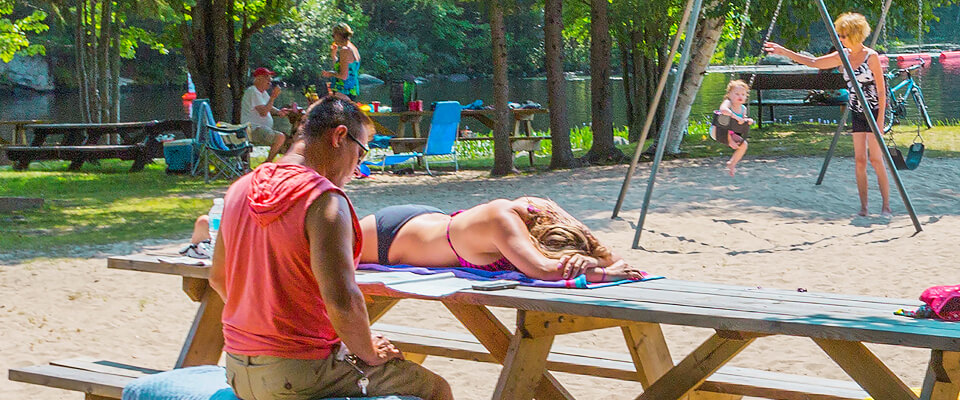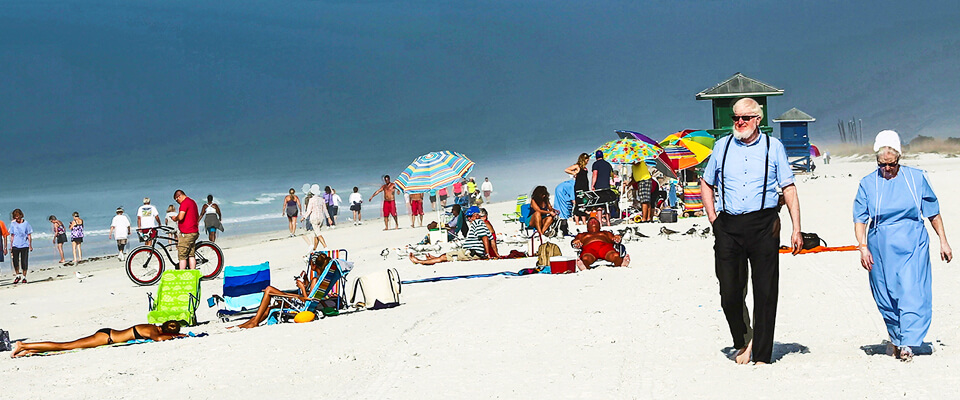Every family has one. The crazy uncle who never stops talking. If you’re lucky you also have the wise cousin, the quiet one who gives advice only when asked and who’s lived a truthful, productive and inventive life. He or she is the family member who surprises you by climbing Mount Everest, or in my case, becomes a professional photographer in his late seventies, exhibiting edgy photographs on the white walls of a hip gallery steps from Toronto’s artsy Queen Street West.
For me, that wise cousin is Jack Wayne. Although we both come from Windsor, we hardly knew each other when we lived under our respective parents’ roofs. Jack is twelve years older than me, and I recall observing a scholarly, bearded, congenial fellow in a corduroy jacket when I was a teenager. He’d be home, visiting from Toronto where he was a professor at the University. I was a high school kid, afraid to approach him, nervous of sounding dumb or provincial. It was difficult for me to imagine what his life was like although I knew enough to realize that I wanted to be like him when I grew up.
What I did visualize was Jack surrounded by great books, brilliant colleagues and adoring students. Back then, I’d never been to the University of Toronto, but I’d seen movie sets of Oxford or Cambridge and I figured all venerable campuses must look the same, lots of ancient stone edifices covered by tendrils of flowing ivy.
Jack was in the thick of things in the 1960s as no one else in our family was. His first act was as a student and eventually as a professor. He arrived at university in 1957, studied Philosophy, then switched to sociology for his two graduate degrees.
It’s in his dissertation, entitled “Social Networks in Urban Society” that I now see the person he would develop and hone throughout his adult life, starting with teaching, moving onto book publishing and culminating in photography. His Ph.D. thesis refuted the concept of the friendless urbanite, a concept Jack still considers a myth. “The romance was if you lived in a rural community, you were happy. It’s not the case,” Jack asserts. “People in cities have more neighbours, more family, more friends than those in rural areas.”
The theme of people connecting –or not—remains the dominant one in his photographic exhibit called “Personal” presented this spring at the Propeller Gallery. How he got from academia to professional photography presents a path to a designer retirement: or how to excel at the art of changing your life to make it better during your senior years.

After retiring from the University of Toronto in 1999, Jack moved onto book publishing by growing Canadian Scholars Press, which he launched from his home office while still teaching. It is now the leading Canadian-owned textbook publisher in the country. The publishing house was his second act. Nine years ago he sold the press to his son Andrew and moved on.
For Jack, it’s been a journey of three acts: first academia, then book publishing and now photography. When I ask him if his retirement has been successive acts of his own careful design, he’s characteristically humble. “You’ve moved from two word-centric careers to a visual, image-based career. Was that by design or coincidence?” I ask.
I want to know what it takes for seniors to move successfully from one career to the next. What’s important is how rewarding the careers can be and how older adults are finding novels ways to doing what was deep inside them from a young age. Being a photographer appears to make my cousin happier than his previous work and I’m curious how seniors begin to connect the dots in older age, begin to know what will make them become their best selves.
Jack says with his photography he wishes “to build the case in each photo that it is decipherable. I take the photo. I bring something to the photo. Someone else might be seeing something completely different.”
For him, the excitement is in what the viewer sees. It doesn’t necessarily need to portray what he saw through the lense of his camera. What all Jack’s photos do is connect people, put them in places where their very beings take on an intricate connectedness with others. The act of viewing the photo connects the observer to the subject of the photo and ultimately to the photographer himself.
Taking up professional photography was no coincidence, he assures me. “Exhibiting photographs is very revealing. You have to reveal yourself,” he asserts. “There is ambiguity and the more ambiguous the photo, the better the photo. It means the observer is bringing his or her intelligence or life experience to the shot.”
In July, he exhibited at the Toronto Outdoor Art Exhibition at Nathan Phillips Square and he’s selling his work after about a year into his new profession. In addition this summer he has shown his images at juried shows, 150 Years of Light in Canada and the Art of Politics.
I suppose what I’m searching for are the answers to the big questions, the nagging ones that most older people think about: the fear of poverty and loneliness, thoughts of mortality, leaving a legacy, and making a difference. In Jack’s case I believe the three acts of his life are taking him exactly where he wishes to be: connected, open to others and comfortable with his own talent.































